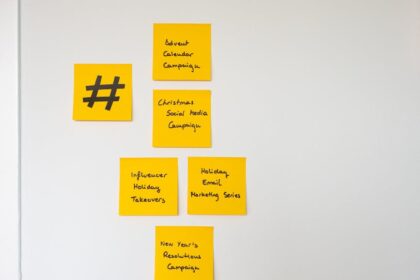The Indispensable Role of a Content Calendar in Modern Marketing
In the dynamic landscape of digital marketing, where attention spans are fleeting and competition for eyeballs is fierce, consistent, high-quality content stands as a cornerstone of audience engagement and business growth. Yet, for many organizations, content creation remains an ad-hoc, reactive process, often leading to missed opportunities, inconsistent messaging, and a chaotic workflow. This is precisely where a robust content calendar transcends its basic function as a mere scheduling tool, evolving into an indispensable strategic imperative. Far from being a simple list of topics and publication dates, a well-conceived content calendar serves as the central nervous system of your entire content operation, establishing a rhythm and predictability that not only benefits your internal teams but also builds anticipation and trust with your target audience. It’s the blueprint that transforms sporadic ideation into a systematic pipeline of valuable, relevant, and timely information, directly aligning every piece of content with overarching business objectives. Without a defined content calendar, organizations risk content silos, redundant efforts, and a profound disconnect between their content output and their strategic goals. It’s the difference between navigating a complex marketing journey with a detailed map and attempting to do so blindly, relying solely on intuition and last-minute scrambles. The ultimate aim is to move beyond simply “creating content” to “publishing strategically impactful content consistently.”
Core Benefits: Unlocking Efficiency and Strategic Consistency
The advantages of implementing a meticulously planned content calendar are multifaceted, impacting every facet of your content marketing ecosystem, from internal operational efficiency to external audience perception and bottom-line growth.
Enhanced Organization and Efficiency: Perhaps the most immediate benefit, a content calendar acts as a central repository for all content-related information. It eliminates the guessing game, providing a clear overview of what needs to be created, by whom, and by when. This clarity significantly streamlines workflows, reduces last-minute scrambles, and minimizes content bottlenecks. Teams can anticipate upcoming tasks, allocate resources more effectively, and avoid the common pitfalls of duplicated efforts or forgotten assignments.
Consistent Publishing Schedule: Consistency is paramount in digital content. A content calendar enables you to establish and maintain a predictable publishing cadence, whether daily, weekly, or monthly. This regularity is crucial for building audience expectations and loyalty, fostering a habit for your audience to return to your platform. From an SEO perspective, search engines favor websites that publish fresh, relevant content consistently, signaling to algorithms that your site is active and authoritative, thereby improving crawl rates and potentially boosting organic rankings.
Improved Content Quality and Depth: When content creation is planned in advance, it allows ample time for thorough research, comprehensive outlining, multiple rounds of editing, and meticulous optimization. This foresight mitigates the pressure of churning out hasty, superficial pieces. Instead, teams can dedicate the necessary intellectual resources to produce high-quality, deeply researched, and truly valuable content that resonates with the audience and stands out in a crowded digital space.
Strategic Alignment: A content calendar ensures that every piece of content serves a purpose. It allows you to connect individual content items to broader marketing campaigns, specific sales funnel stages, and overarching brand messaging. By mapping content to distinct business objectives – be it brand awareness, lead generation, customer education, or thought leadership – you ensure that your content efforts are not just busywork but directly contribute to measurable organizational goals. This strategic alignment turns content from an expense into a powerful revenue driver.
Identification of Content Gaps and Opportunities: Visualizing your content plan on a calendar provides a bird’s-eye view of your coverage. This perspective makes it easier to identify content gaps – topics or formats you haven’t yet addressed that are relevant to your audience or business goals. Conversely, it helps prevent unnecessary topic overlap or redundancy, ensuring your content explores a wide range of relevant subjects without repeating itself. This holistic view facilitates comprehensive content exploration and diversified output.
Facilitates Team Collaboration and Accountability: For multi-person content teams, a calendar is an indispensable collaboration tool. It clearly defines roles and responsibilities, assigning content pieces to specific authors, editors, designers, and SEO specialists. Progress tracking becomes transparent, allowing team members to see the status of each content piece and anticipate their next steps. This shared visibility fosters accountability and enhances inter-departmental communication, ensuring everyone is working towards a common goal.
Data-Driven Decision Making: Integrating performance tracking into your calendar planning allows you to move beyond anecdotal evidence. By planning for which metrics to track for each content piece, you create a feedback loop that informs future content strategy. Analyzing what performed well (or didn’t) provides valuable insights into audience preferences, content formats, and distribution channels, enabling iterative improvements and a data-driven approach to content marketing.
SEO Advantage: While mentioned earlier, the SEO advantage warrants specific emphasis. A content calendar is a powerful tool for systematic SEO optimization. It allows you to plan content around target keyword themes, ensure appropriate keyword density, strategically incorporate long-tail keywords, plan for internal and external linking, and integrate technical SEO considerations like meta descriptions, alt text, and schema markup before content creation even begins. This proactive approach ensures content is optimized for search engines from its inception, significantly improving its chances of ranking well and driving organic traffic.
Foundation First: Pre-Calendar Strategic Pillars
Before a single content idea is jotted down or a publication date assigned, the efficacy of any content calendar hinges on a foundational understanding of several critical strategic pillars. Skipping these preliminary steps is akin to building a house without a blueprint; the structure may stand, but its stability and purpose will always be compromised.
Defining Your Target Audience Persona(s): This is the bedrock of all effective content. You cannot create content that resonates if you don’t know who you’re talking to. Go beyond basic demographics (age, location, income) and delve into psychographics. What are their pain points, challenges, aspirations, and goals? What questions are they asking? Where do they consume content (blogs, social media, video platforms, podcasts)? What are their preferred formats? Develop detailed buyer personas – semi-fictional representations of your ideal customers – to guide every content decision. Understanding their unique needs allows you to craft content that truly solves their problems and addresses their interests, making it inherently more valuable and shareable.
Establishing Clear Content Goals: Content without goals is just noise. Before you create, ask: what do you want your content to achieve? Goals should be Specific, Measurable, Achievable, Relevant, and Time-bound (SMART). Examples include: increase website traffic by 20% in Q3, generate 50 qualified leads per month from blog content, improve brand mentions on social media by 15% within six months, or reduce customer support queries by 10% through educational content. Different goals will necessitate different content types, tones, and distribution strategies. Your calendar will then become a roadmap to achieving these specific objectives.
Understanding Your Business Objectives: Content marketing is not an island; it must seamlessly integrate with broader business objectives. How does your content directly contribute to the company’s revenue, market share expansion, customer retention, or product adoption? For instance, if the business objective is to launch a new product, your content calendar should be heavily weighted towards educational content, product benefits, and testimonials related to that launch. Aligning content efforts with these high-level objectives ensures that content investments yield tangible business returns.
Conducting a Comprehensive Content Audit: Before planning new content, assess your existing content assets. A content audit involves cataloging all your current content (blog posts, videos, whitepapers, social media updates, emails), analyzing their performance (traffic, engagement, conversions), and identifying what’s working, what’s outdated, and where there are gaps. This audit reveals opportunities for content repurposing (turning a successful blog post into an infographic, for example), identifying evergreen pieces that need updating, or recognizing underperforming content that should be retired or revamped. It prevents duplication of effort and ensures you leverage your existing assets effectively.
Analyzing Competitor Content Strategies: Knowledge is power, and knowing what your competitors are doing in the content space is invaluable. Identify their top-performing content, the topics they cover, the formats they use, their distribution channels, and their engagement metrics. Look for their strengths to learn from, but more importantly, identify their weaknesses or content gaps that you can fill. This isn’t about copying; it’s about understanding the market landscape, identifying areas for differentiation, and discovering underserved niches where your content can truly shine. Tools like SEMrush or Ahrefs can be incredibly useful for competitor content analysis.
Defining Your Brand Voice and Messaging Guidelines: Consistency in brand voice and messaging is crucial for building a strong brand identity and fostering trust. Before populating your calendar, establish clear guidelines for your brand’s voice (e.g., authoritative, conversational, playful, empathetic), tone (which can shift depending on the context), and core messaging. This ensures that every piece of content, regardless of who creates it, reflects a unified brand personality. These guidelines act as a compass for all content creators, ensuring every output aligns with the brand’s overarching communication strategy.
Resource Assessment: Finally, be realistic about your resources. What is your budget for content creation (including tools, freelancers, software)? How many team members are dedicated to content, and what are their specific skill sets (writing, editing, design, video production, SEO)? Understanding your available resources will dictate the feasible volume and types of content you can produce. Over-committing your team or budget can lead to burnout and a decline in quality. A clear resource assessment helps set realistic expectations for your content calendar.
Dissecting the Anatomy: Essential Components of a Robust Content Calendar Entry
The true utility of a content calendar lies in its granular detail. Each entry within the calendar isn’t just a placeholder for a topic; it’s a comprehensive mini-brief, containing all the essential information required to bring that piece of content to life efficiently and effectively. Overlooking any of these components can lead to confusion, delays, or content that misses its mark.
Publication Date and Time: This is fundamental. Specifying the exact date and time ensures timely delivery and consistency. It also allows for strategic scheduling around product launches, seasonal events, holidays, or specific campaign timelines. For evergreen content, this might be a set recurring slot, while for timely content, it will be more dynamic.
Content Title/Topic: A clear, concise, and often SEO-friendly working title or a detailed topic description is crucial. This serves as the primary identifier for the content piece. It should hint at the content’s focus and value proposition. Even if the final headline changes, the core topic should be unambiguous.
Content Type/Format: Explicitly define the format. Is it a 1500-word blog post, a 3-minute explainer video, an infographic, a podcast episode, a series of social media updates, a downloadable whitepaper, an email newsletter segment, or a webinar? Different formats require different production workflows and resource allocations.
Target Keyword(s): This is where SEO optimization begins. List the primary target keyword(s) for the content, along with any relevant secondary or long-tail keywords (LSI keywords) that should be naturally integrated. This ensures the content is optimized for search engines from the conceptual stage, improving its discoverability.
Target Audience Segment: Specify which of your defined buyer personas this content is designed for. This ensures the tone, language, examples, and solutions presented are tailored to their specific needs and interests, maximizing relevance and engagement.
Responsible Author/Creator: Assign clear ownership for content creation. This ensures accountability and prevents confusion about who is responsible for drafting the initial content. For larger teams, this might also include an editor, designer, or video producer.
Status/Workflow Stage: Implement a clear status tracking system. Common stages include: Idea, Brief Created, Assigned, Draft In Progress, Awaiting Review, Edited, Designed, SEO Optimized, Scheduled, Published, Promoted, Archived. This visual progress tracker is essential for team collaboration and workflow management.
Call-to-Action (CTA): Every piece of content should guide the audience towards a desired next step. Clearly define the primary CTA for each content piece: download an ebook, subscribe to a newsletter, request a demo, visit a product page, leave a comment, share on social media. The CTA should be relevant to the content and the buyer’s journey stage.
Distribution Channels: Outline precisely where the content will be promoted. This could include your blog, specific social media platforms (Facebook, Instagram, LinkedIn, Twitter, Pinterest, TikTok), email newsletters, paid advertising campaigns, guest post opportunities, PR outreach, or internal communication channels. Planning distribution in advance ensures content reaches its intended audience.
Associated Campaign/Theme: If the content is part of a larger marketing campaign (e.g., a product launch, a seasonal promotion, a specific thought leadership initiative), link it explicitly. This ensures thematic consistency and strategic alignment across all marketing efforts.
Supporting Assets Needed: Detail any additional assets required for the content piece. This might include specific images, custom graphics, videos, data points, research studies, expert quotes, interview subjects, or even specific software tools needed for creation. Planning these in advance prevents delays.
Performance Metrics to Track: Define the key performance indicators (KPIs) that will be used to measure the success of this particular content piece. Examples include page views, unique visitors, time on page, bounce rate, social shares, comments, lead conversions, sales conversions, SEO rankings, and backlinks generated. This foresight enables data-driven analysis post-publication.
Notes/Brief: This section serves as a catch-all for any specific instructions, detailed brief points, research links, important background information, creative considerations, or special requirements for the content piece. It acts as a comprehensive brief for the creator, ensuring all nuances are captured.
SEO Checklist Integration: Beyond keywords, this might include specific requirements for meta descriptions, H1/H2 tags, image alt text, internal linking opportunities, external linking to authoritative sources, mobile optimization considerations, and potential schema markup needed for richer search results. Integrating these at the planning stage ensures proactive SEO.
The Step-by-Step Blueprint for Building Your Content Calendar
Constructing an effective content calendar is a methodical process that moves from high-level strategic thinking down to granular operational planning. Each step builds upon the previous one, culminating in a robust system for consistent content output.
Step 1: Define Your Calendar Scope and Timeframe:
Decide on the planning horizon for your content calendar. Will you plan annually, quarterly, or monthly? An annual overview is excellent for high-level themes and major campaigns, while quarterly or monthly planning allows for more granular detail and flexibility. A common approach is to plan major themes annually, break them down into quarterly topics, and then detail individual content pieces monthly or bi-weekly. This tiered approach offers both long-term vision and short-term agility.
Step 2: Ideation & Brainstorming:
This is where content ideas are generated, feeding your pipeline. Leverage multiple sources to ensure a rich and diverse pool of topics:
- Audience Pain Points & FAQs: Directly address common questions your customers ask sales or support teams. Use tools like AnswerThePublic or alsoasked.com.
- Keyword Research: Identify search terms your audience uses (covered in Step 3).
- Competitor Analysis: Analyze what content performs well for your competitors.
- Industry Trends & News: Stay updated on current events and emerging trends in your industry.
- Seasonal Events & Holidays: Plan content around relevant holidays or seasonal shifts that impact your audience.
- Internal Subject Matter Experts (SMEs): Interview sales teams, product developers, customer service, or senior leadership for unique insights and expertise.
- Content Repurposing Opportunities: Look at your existing high-performing content that can be re-imagined in new formats or updated.
- Customer Feedback & Surveys: Direct feedback from your audience can be goldmines for content ideas.
Step 3: Keyword Research and SEO Integration Deep Dive:
This isn’t just about finding keywords; it’s about understanding search intent and planning content around topics that your audience actively seeks.
- Understand Search Intent: Is the user looking for information (informational), trying to buy something (transactional), comparing products (commercial investigation), or looking for a specific website (navigational)? Tailor content to match intent.
- Tools: Utilize professional SEO tools like Ahrefs, SEMrush, Moz Keyword Explorer, Google Keyword Planner, and Google Search Console to discover relevant keywords, analyze search volume, competition, and identify long-tail opportunities.
- Mapping Keywords to Content Types: Some keywords are better suited for blog posts, others for product pages, and some for video tutorials.
- Topic Clusters and Pillar Pages: Plan content around broad “pillar” topics, supported by multiple, interlinked “cluster” content pieces that delve into specific sub-topics. This strategy builds topical authority with search engines.
- Competitive Keyword Analysis: See what keywords your competitors rank for that you don’t.
Step 4: Map Content to the Buyer’s Journey (Funnel Stages):
Your content should cater to audiences at different stages of their purchasing journey:
- Awareness Stage (Top of Funnel – ToFu): Content that attracts attention and addresses broad pain points. (e.g., blog posts, infographics, general videos).
- Consideration Stage (Middle of Funnel – MoFu): Content that helps prospects evaluate solutions. (e.g., whitepapers, case studies, comparison guides, webinars).
- Decision Stage (Bottom of Funnel – BoFu): Content that persuades prospects to choose your solution. (e.g., testimonials, demos, free trials, pricing guides).
- Retention/Advocacy Stage: Content that supports existing customers and encourages loyalty. (e.g., tutorials, advanced tips, community forums, exclusive content).
Ensure a balanced mix of content across these stages to nurture leads effectively.
Step 5: Select Content Formats and Allocate Resources:
Based on your audience’s preferences, goals, and available resources, choose the most appropriate content formats. Don’t limit yourself to just blog posts. Consider video, podcasts, infographics, interactive tools, quizzes, email series, social media snippets, live streams, and more. Match the format to the message and the audience’s consumption habits. Confirm you have the internal or external resources (writers, designers, videographers) to produce these formats.
Step 6: Determine Publishing Frequency and Schedule:
Be realistic. It’s better to publish consistently with less frequency than to start strong and burn out. Consider your team’s capacity, the complexity of content, and industry norms. Will you publish daily, bi-weekly, weekly, or monthly? Once you determine a sustainable frequency, stick to it. Populate recurring slots on your calendar first.
Step 7: Assign Roles and Responsibilities:
Clearly define who is responsible for each stage of the content creation process. This might include:
- Content Owner/Manager: Oversees the entire process.
- Writer: Drafts the content.
- Editor: Reviews for grammar, style, tone, and clarity.
- Designer: Creates visuals.
- SEO Specialist: Ensures optimization.
- Publisher: Uploads and schedules.
- Promoter: Handles distribution.
Clear assignments minimize confusion and ensure accountability.
Step 8: Populate Your Calendar with Details:
Start filling in your calendar with the specific content pieces, incorporating all the essential components discussed previously (publication date, title, content type, keywords, audience, owner, status, CTA, distribution, etc.). Be as detailed as possible in the “Notes/Brief” section for each entry.
Step 9: Establish a Content Workflow and Approval Process:
Define the step-by-step journey of a content piece from idea to publication. This includes:
- Briefing: Creator receives detailed instructions.
- Drafting: Initial content creation.
- Self-Review: Creator checks their own work.
- Internal Review: Editor/SME review for accuracy and quality.
- Legal/Compliance Review (if necessary): For regulated industries.
- Design/Visuals Integration.
- SEO Check: Final optimization.
- Final Approval: By content manager or relevant stakeholder.
- Scheduling/Publishing.
Define turnaround times for each stage to maintain momentum.
Step 10: Plan for Promotion and Distribution:
Content creation is only half the battle. For each content piece, strategize how it will be amplified.
- Organic Social Media: Which platforms, what specific messages, relevant hashtags, visual assets.
- Email Marketing: Segmented lists, compelling subject lines, preview text.
- Paid Promotion: When and where paid ads will run, budget allocation.
- Internal Linking: Linking to relevant internal content.
- External Outreach: Guest posting, influencer collaboration, PR.
- Community Engagement: Sharing in relevant online forums or groups.
Integrate these promotional tasks directly into your calendar.
Step 11: Implement Tracking and Measurement Mechanisms:
Before content goes live, ensure that the necessary analytics tools are in place to track its performance against your defined KPIs. Set up UTM parameters for tracking campaign performance, ensure conversion goals are configured in Google Analytics, and prepare dashboards to visualize results. This proactive setup ensures you can accurately measure ROI.
Step 12: Review, Refine, and Iterate:
Your content calendar is a living document, not a static artifact. Regularly review its effectiveness, typically monthly or quarterly. Analyze performance data (from Step 11), gather feedback from teams (sales, customer service), and assess market changes. Be prepared to pivot, adjust topics, change formats, or alter your schedule based on these insights. Agile content marketing allows for continuous improvement.
Tools and Technologies for Seamless Content Calendar Management
The effectiveness of your content calendar is greatly enhanced by the right tools. The choice depends on your team size, complexity of operations, budget, and desired features.
Spreadsheets (Google Sheets, Excel):
- Pros: Highly flexible, cost-effective (often free), easy to customize columns and views, familiar to most users. Excellent for small teams or individuals just starting out.
- Cons: Can become unwieldy with complex workflows, limited automation, difficult for real-time collaboration on intricate tasks, no built-in reminders or advanced integrations.
- Use Case: Basic content planning, personal blogs, very small teams with straightforward processes.
Project Management Tools (Trello, Asana, Monday.com, ClickUp):
- Pros: Highly visual (Kanban boards, Gantt charts), excellent for team collaboration, task assignments, progress tracking, notifications, often offer integrations with other tools (Slack, Google Drive). Many have free tiers or affordable pricing.
- Cons: Can have a learning curve for advanced features, may require some initial setup to align with content specific workflows, not explicitly designed for content ideation or SEO analysis.
- Use Case: Medium-sized content teams managing diverse content types and complex workflows, where project tracking and collaboration are paramount.
Dedicated Content Calendar Software (CoSchedule, DivvyHQ, Loomly, StoryChief):
- Pros: Built specifically for content marketing, often include integrated features like social media scheduling, SEO analysis tools, content idea generators, workflow automation, approval processes, and robust analytics dashboards. Centralizes many content tasks.
- Cons: Can be more expensive than general project management tools, may have a steeper learning curve due to feature richness, might require adoption across multiple departments to maximize value.
- Use Case: Larger, more mature content marketing teams that need an all-in-one solution for planning, creation, distribution, and measurement, especially those focusing on omnichannel strategies.
Marketing Automation Platforms (HubSpot, Marketo, Pardot):
- Pros: Offer content calendar functionality as part of a broader suite of marketing tools, integrating content planning directly with CRM, email marketing, landing pages, lead nurturing, and comprehensive analytics. Provides a holistic view of the customer journey.
- Cons: Significant investment (cost and implementation time), can be overkill for small businesses, steep learning curve, less flexible for highly customized content workflows outside the platform’s ecosystem.
- Use Case: Enterprises or large marketing departments that want to unify their entire marketing stack and attribute content performance directly to leads and sales within a CRM environment.
AI-Powered Content Tools:
- Pros: Assist with ideation (e.g., topic generation based on keywords), drafting (AI writers), SEO analysis (content optimization scores), and trend identification. Can significantly accelerate the initial stages of content creation and optimization.
- Cons: Require human oversight and editing for quality and brand voice, often necessitate separate subscriptions or integrations with other tools.
- Use Case: Content teams looking to augment their efficiency, overcome writer’s block, and streamline aspects of SEO optimization.
Digital Asset Management (DAM) Systems:
- Pros: Centralized repository for all creative assets (images, videos, logos, brand guidelines), ensuring consistency and easy access for content creators. Version control and permission management.
- Cons: Can be expensive and complex to implement, often a separate system that needs integration.
- Use Case: Large organizations with extensive visual content needs and multiple teams producing content.
Optimizing for SEO: Beyond Keywords in Your Calendar Planning
While keyword research forms a critical backbone for SEO, true optimization within your content calendar extends far beyond simply sprinkling keywords throughout your text. It involves a holistic strategic approach that considers how search engines understand content, how users interact with it, and how your website provides the best possible experience.
Semantic SEO and Topic Clusters:
Your calendar shouldn’t just list individual blog posts based on single keywords. Instead, plan for topic clusters. Identify broad “pillar pages” that cover a wide subject comprehensively, then create numerous “cluster content” pieces that delve into specific sub-topics, all hyperlinked to the pillar page. This signals to search engines that your website is an authority on the overarching topic, boosting the collective ranking power of all related content. Your calendar entries should clearly link which cluster piece belongs to which pillar, and plan for the internal linking strategy.
User Intent Alignment:
For every content piece on your calendar, explicitly define the user’s search intent. Are they looking for information (e.g., “what is content marketing”), a specific product (e.g., “best content calendar software”), or a solution to a problem (e.g., “how to build a content calendar”)? Content planned with clear intent is far more likely to rank and convert, as it directly addresses what the user is seeking. Your calendar entry should prompt the creator to craft content that perfectly matches this intent.
Technical SEO Considerations:
While not directly part of the content itself, planning for technical SEO elements ensures your content is discoverable and crawlable. Your calendar can include reminders or checklist items for content creators/publishers:
- Mobile-Friendliness: Is the content responsive and easily consumed on all devices?
- Page Speed Optimization: Are images optimized? Is the site loaded with unnecessary scripts?
- Schema Markup: Can structured data be added to enhance search snippets (e.g., for recipes, reviews, events, FAQs)?
- Canonical Tags: To prevent duplicate content issues.
- XML Sitemaps & Robots.txt: Ensuring new content is submitted and accessible.
While often handled by developers, a content calendar helps ensure content is built with these considerations in mind.
Internal Linking Strategy:
A well-executed internal linking strategy spreads “link equity” throughout your site, helping search engines understand the hierarchy and relationships between your content. Your content calendar should prompt you to identify relevant internal links for each new piece of content you create. Conversely, it should also remind you to go back and update older, relevant content to link to your new pieces. This creates a powerful web of interconnected content, boosting SEO.
External Linking for Authority:
Don’t be afraid to link out to reputable, authoritative external sources. This demonstrates that your content is well-researched and adds value by providing additional resources to your audience. It also signals to search engines that you are a good neighbor in the online ecosystem. Your content calendar should encourage the inclusion of relevant, high-quality external links where appropriate.
Content Freshness and Updates:
SEO isn’t just about new content; it’s also about keeping existing content fresh and relevant. Your content calendar should include scheduled audits and updates for your evergreen content. This could involve updating statistics, adding new insights, improving readability, or refreshing images. Regularly updating high-performing but aging content can significantly boost its search rankings and continued relevance.
SERP Feature Optimization:
Plan content specifically to target rich results and SERP (Search Engine Results Page) features like featured snippets, knowledge panels, local packs, and video carousels. This involves structuring content with clear headings, using bullet points or numbered lists, providing concise definitions, and creating high-quality videos. Your content calendar can prompt these structural considerations.
Monitoring Algorithm Changes:
While you can’t predict every Google algorithm update, a well-managed content calendar allows for agility. By consistently monitoring your analytics and being aware of major algorithm shifts, you can quickly adapt your content strategy and calendar to align with new best practices, ensuring your content remains visible and competitive.
Advanced Strategies for Content Calendar Mastery
Moving beyond the fundamentals, advanced content calendar strategies enable organizations to maximize their content’s impact, diversify their reach, and build deeply engaged communities.
Evergreen Content Pillars:
Beyond individual topics, plan for evergreen content pillars – foundational, comprehensive pieces that remain relevant for years, requiring only minor updates. These are typically long-form, authoritative articles or resources that serve as cornerstones of your content strategy. Your calendar should allocate specific time for their creation and subsequent periodic review/update. Examples include ultimate guides, comprehensive glossaries, or definitive how-to articles. They continuously attract organic traffic over time.
Seasonal and Trend-Based Content:
While evergreen content provides a steady base, a dynamic calendar integrates timely content that capitalizes on current events, holidays, industry trends, or breaking news. This requires flexibility and foresight. Plan for major annual events well in advance (e.g., Black Friday, Cyber Monday, specific industry conferences) but also leave room for agile responses to unexpected trends, ensuring your content remains fresh and topical. This blend of evergreen and trending content optimizes for both long-term authority and short-term relevance.
Content Repurposing and Atomization:
This is a powerhouse strategy for maximizing output from a single piece of content. Don’t let a great idea live and die as a single blog post. Plan to atomize it into multiple formats:
- A long-form blog post can become:
- A series of social media posts (quotes, statistics, questions).
- An infographic summarizing key data.
- A short video explaining a concept.
- A podcast episode expanding on the topic.
- An email newsletter series.
- A slide deck for a webinar.
Your calendar should explicitly map out these repurposing opportunities, noting which derivative content pieces will be created from which source content.
Omnichannel Content Strategy:
An advanced content calendar considers the entire customer journey across all touchpoints, ensuring a consistent message and experience. This isn’t just about publishing on multiple platforms; it’s about tailoring content for each channel while maintaining a unified brand voice. For example, a campaign might involve a blog post (website), a short video (YouTube/TikTok), an infographic (Pinterest/Instagram), and a discussion thread (LinkedIn), all planned cohesively within the calendar.
User-Generated Content (UGC) Integration:
Harnessing the power of your audience can significantly amplify your content efforts. Plan for campaigns or ongoing initiatives that encourage and integrate user-generated content, such as customer testimonials, product reviews, social media mentions, or community forum discussions. Your calendar can schedule prompts, contests, or showcases for UGC, demonstrating authenticity and building community.
Influencer Collaboration Planning:
Identify and integrate partnerships with relevant industry influencers. Your content calendar can schedule joint content creation (e.g., co-authored articles, interviews, joint webinars, sponsored social posts), ensuring that these collaborations align with your broader content strategy and campaign objectives. This expands your reach to new, engaged audiences.
A/B Testing Content Elements:
Allocate specific content slots for experimentation. This could involve A/B testing different headlines, calls-to-action, image styles, content lengths, or even publication times. Your calendar should denote these tests and the metrics to be tracked, enabling data-driven optimization of your content strategy over time.
Audience Segmentation and Personalization:
For organizations with diverse audiences or customer segments, the content calendar can be segmented to deliver highly personalized content. This involves planning specific content pieces or adaptations for different buyer personas, industry verticals, or stages in the sales funnel. This level of granularity ensures maximum relevance and engagement.
Crisis Communication Planning:
While typically outside daily content, an advanced calendar might include a flexible framework for crisis communications. This involves pre-approved messaging, designated communication channels, and a rapid response protocol. While not “content” in the traditional sense, having a plan in place ensures a consistent and appropriate response in unforeseen circumstances.
Internationalization/Localization:
For global businesses, the content calendar can manage content translated and localized for different languages, cultures, and regional nuances. This involves not just translation but adapting content to resonate with specific cultural contexts, requiring meticulous planning and dedicated resources.
Measuring Success and Iterative Refinement
The true value of a content calendar isn’t just in its creation, but in its continuous optimization. Measurement and analysis form a critical feedback loop, transforming your calendar from a static plan into a dynamic, data-informed strategy for consistent improvement.
Key Performance Indicators (KPIs):
Before publishing, ensure you’ve defined the relevant KPIs for each content piece within your calendar entry. These metrics should directly tie back to your initial content goals. Common KPIs include:
- Traffic: Page views, unique visitors, referral sources (organic, social, direct).
- Engagement: Time on page/site, bounce rate, scroll depth, comments, social shares, likes.
- Conversions: Lead form submissions, newsletter sign-ups, product purchases, demo requests, downloads.
- SEO Rankings: Keyword positions, organic visibility, backlinks generated.
- Audience Growth: Subscriber growth, follower growth.
- Brand Mentions: Mentions across social media or news sites.
Attribution Modeling:
Understanding which content piece or series contributes to specific business outcomes requires robust attribution. Integrate your content calendar with your analytics and CRM systems to track the customer journey. Did a blog post initiate the first touch, leading to a conversion later? Did a whitepaper directly generate a sales-qualified lead? This deeper understanding informs future content investment decisions.
Analytics Tools:
Leverage tools like Google Analytics, Google Search Console, social media insights (e.g., Facebook Insights, LinkedIn Analytics), email marketing platform analytics, and any dedicated content marketing dashboards. Regularly pull reports and visualize data to identify patterns and trends.
Regular Review Meetings:
Schedule recurring meetings (e.g., monthly or quarterly) to review content performance against your KPIs. This collaborative session should involve all relevant stakeholders – content creators, SEO specialists, marketing managers, sales representatives, and even product teams. Discuss what worked, what didn’t, and why. Celebrate successes and learn from failures.
Feedback Loops:
Beyond analytics, incorporate qualitative feedback.
- Sales Team: What questions are prospects asking? What content helps close deals? What content gaps are hindering their process?
- Customer Service: What are common customer pain points or questions that educational content could address proactively?
- Audience Surveys/Interactions: Directly ask your audience what content they want or what problems they need solved.
- Comment Sections/Social Media: Monitor discussions for recurring themes or questions.
Agile Content Marketing:
Embrace an agile mindset. Your content calendar is a flexible guide, not a rigid prison. Based on performance data, market shifts, or new insights, be prepared to:
- Adjust topics: Pivot away from underperforming topics, double down on what resonates.
- Change formats: Experiment with new content types if current ones aren’t engaging.
- Alter publishing frequency: Increase or decrease based on capacity and audience appetite.
- Reprioritize: Shift resources to higher-impact content.
Experimentation:
Dedicate a portion of your content calendar for experimentation. This could involve trying a new content format, targeting an untapped keyword niche, collaborating with a new influencer, or testing a different tone of voice. Not every experiment will succeed, but the insights gained are invaluable for continuous improvement and innovation. Document these experiments and their outcomes within your calendar system for future reference.
Common Pitfalls and Proactive Mitigation
Even the most well-intentioned content calendar can falter without awareness of common pitfalls and strategies for proactive mitigation. Avoiding these traps ensures consistency and sustains content quality.
Over-scheduling:
- Pitfall: Attempting to publish too much content with too few resources, leading to rushed output, burnout, and a decline in quality. This is a common mistake for enthusiastic but inexperienced teams.
- Mitigation: Be realistic about your team’s capacity and bandwidth during the resource assessment phase. Start with a conservative publishing frequency and gradually increase it only if quality can be maintained. Prioritize quality over quantity.
Under-scheduling:
- Pitfall: Not planning enough content, resulting in missed opportunities, inconsistent output, and a failure to build audience expectation or SEO authority.
- Mitigation: Conduct thorough keyword research and audience analysis to identify ample topics. Regularly brainstorm and keep a backlog of ideas. Set a minimum viable publishing frequency that aligns with your goals and stick to it.
Lack of Flexibility:
- Pitfall: Treating the calendar as an immutable, rigid document that cannot adapt to market shifts, breaking news, or unexpected opportunities. This can make content feel stale or irrelevant.
- Mitigation: Build in “flex slots” or buffer time for agile responses. Review the calendar regularly and be prepared to swap out pre-planned content for more timely or reactive pieces when necessary. Communicate changes clearly to the team.
Ignoring Performance Data:
- Pitfall: Creating content based on assumptions or gut feelings, without analyzing what actually resonates with the audience or achieves business goals. This leads to repeating mistakes and missing opportunities to leverage successful patterns.
- Mitigation: Integrate performance tracking from the outset. Schedule regular review meetings to analyze KPIs. Make data-driven decisions to refine your strategy, optimize what works, and eliminate what doesn’t.
Siloed Teams:
- Pitfall: Lack of communication and collaboration between content creators, SEO specialists, designers, sales teams, and customer service. This results in content that isn’t aligned with business needs or doesn’t leverage internal expertise.
- Mitigation: Use a collaborative calendar tool. Establish cross-functional review processes and regular meetings where all relevant departments can provide input and feedback on content plans and performance.
Poorly Defined Audience/Goals:
- Pitfall: Creating content that lacks clear direction or impact because the target audience is vague or the content goals are undefined. This results in content that is generic and fails to resonate.
- Mitigation: Invest significant time in defining buyer personas and setting SMART content goals before populating the calendar. Ensure every content piece explicitly links back to a specific audience and objective.
Neglecting Promotion:
- Pitfall: Focusing solely on content creation and neglecting the vital steps of promotion and distribution. The “build it and they will come” fallacy leads to great content languishing unseen.
- Mitigation: Integrate content promotion planning directly into each calendar entry. Define specific channels and tactics for each piece. Allocate dedicated time and resources for amplification efforts, including organic social, email, and paid promotion.
Insufficient Resources:
- Pitfall: Attempting to execute an ambitious content strategy without adequate budget, skilled team members, or the right tools. This leads to compromises in quality and delays.
- Mitigation: Conduct a thorough resource assessment before planning. Be realistic about what can be achieved with current resources. Advocate for additional investment if the content goals require it, demonstrating potential ROI. Outsource specific tasks if in-house resources are limited.











